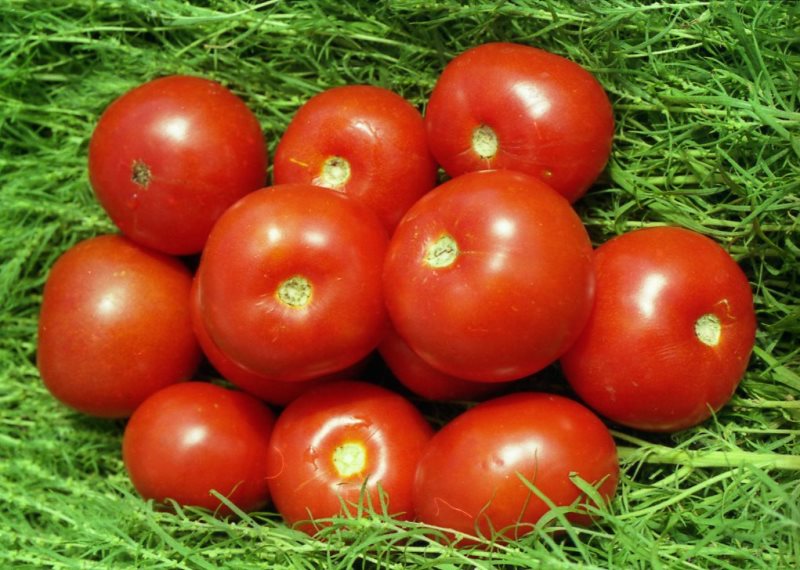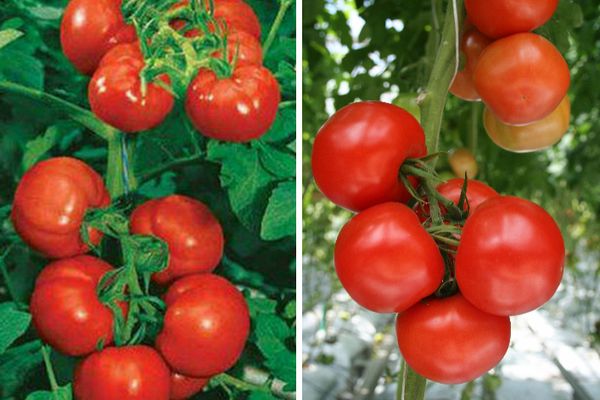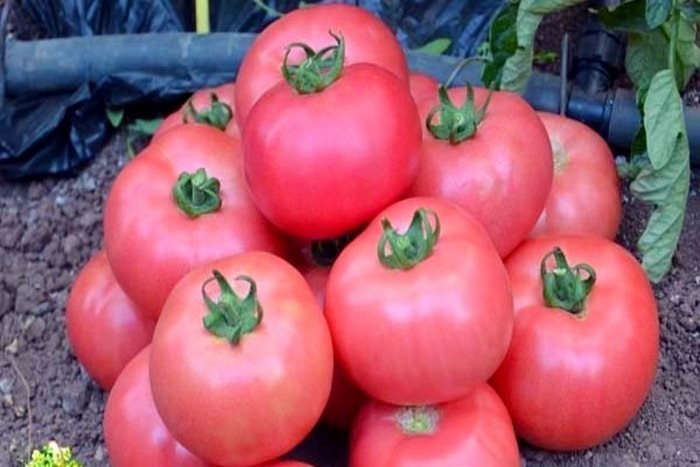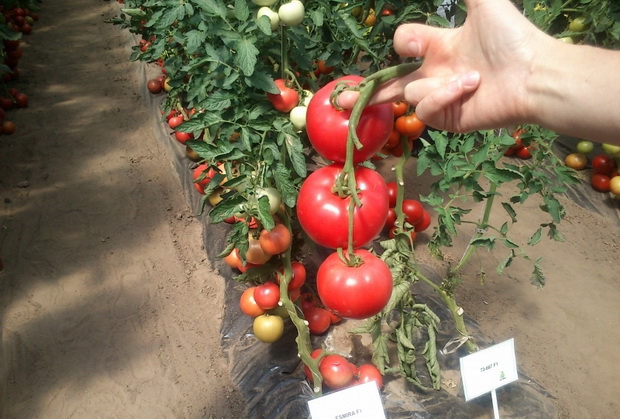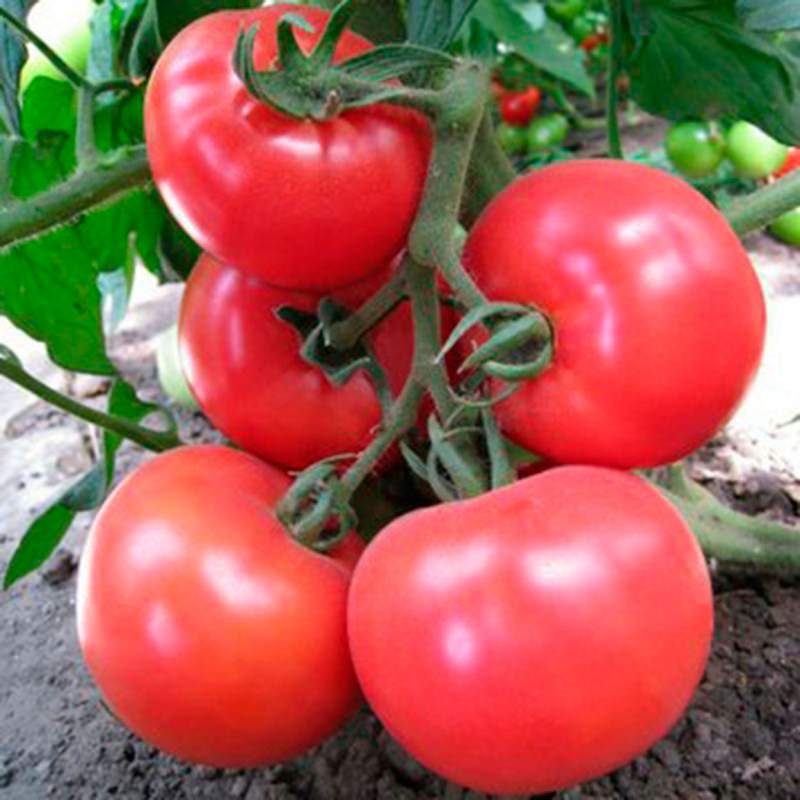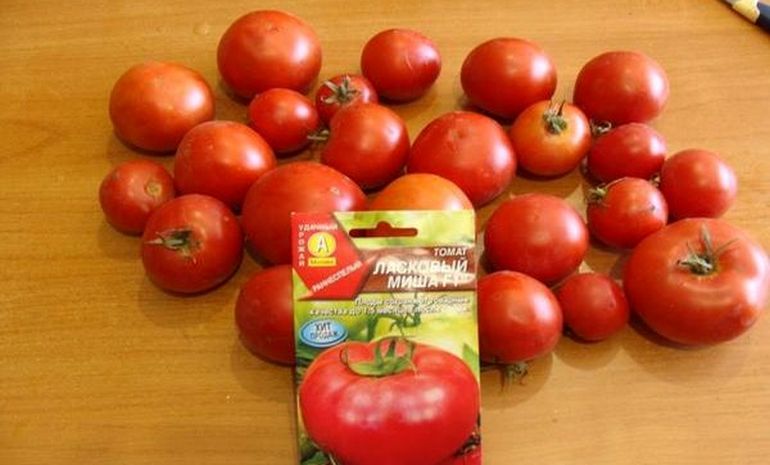Content:
The tomato was brought to Russia only at the beginning of the 16th century. Until that time, Russians did not know the taste of tomatoes. For a long time, the tomato was grown as an ornamental crop.
The tomato gained mass distribution by the end of the 18th century. Empress Catherine II really liked the sweet taste of tomato, so she ordered to grow it in the Russian Empire. The most suitable regions for growth were Crimea, Astrakhan and Georgia.
To date, tomato has taken a confident second place in popularity among grown vegetables. A wide range of products is made from tomatoes. Gardeners canned and salted them for the winter. Large well-known manufacturers make sauces and pastes.
Everyone wants to have a rich harvest of tasty and flavorful tomatoes with as little effort as possible. Tomato Favorite is a useful find for every gardener. The main distinguishing feature of the Favorit variety is its low ability to form side shoots. Stepsons rarely form shoots, and they grow poorly. The variety is intended for cultivation in greenhouses or hotbeds. In southern regions with warm climates, it can be grown outdoors.
Tomato Favorite characteristics and description of the variety
Tomato Favorite F1 is a hybrid of the first generation.
The plant easily tolerates shade and lack of light. It is a variety of cherry tomatoes. Their difference from ordinary tomatoes is that more than 6 fruits are formed on one cluster. Description and characteristics of tomato varieties Favorite and Cherry are basically the same.
Tomato variety Favorit F1 is interdeterminate, can reach 1.5 m in height. Fruit ovaries begin to form above the 7th leaf. Up to 6 fruits can form on one cyst. Therefore, tomato Favorite is also called Cherry Favorite tomato.
Tomato variety Favorite is mid-season. From sowing to harvesting the first fruits, it takes 110 to 120 days. The first crop is harvested in early August.
The shape of the ripe fruit is round, with a slight ribbing. The color is deep red. Nice taste of tomato tomatoes. The skin is smooth and thin. The weight of one tomato ranges from 115 to 130 grams. With good care, the weight can reach 150 grams. From one bush per season, you can remove from 5 to 7 kg of tomato harvest. With increased yields, you can have up to 8 kg of tomatoes per bush.
Tomato Favorite does not tolerate transportation well. They are eaten fresh, made salads, processed into sauces and pasta.
The variety is popular in the central regions of Russia: Moscow, Kaluga, Bryansk and other cities.
Cultivation and care
The judgment that in order to obtain a rich harvest it is enough to plant seedlings and periodically water them is erroneous. With this approach, there will never be a stable and high-quality harvest.
First you need to sow the seeds. Before planting in the ground, they are disinfected in a solution of potassium permanganate and washed under running water. Small plastic cups or pots are suitable containers for germinating seeds. Drainage is placed on the bottom of the container, soil is poured on top and spilled with warm water. After the moisture has been absorbed, small depressions are made in the soil into which the seeds are sown.Sprinkle the seeds on top with a thin layer of moist soil. The container is covered with a plastic lid and stored in a warm, lighted place.
After the first shoots appear, hardening is carried out. Plants are placed in a cooler room.
Seedlings need regular watering, constant lighting.
Young seedlings are planted in the soil when the air temperature outside during daylight hours is set at around 18-20 degrees. This is usually late May - early June. Transplant seedlings in good warm weather, otherwise the plant will hurt and grow slowly.
Important attention must be paid to the soil. Good soil is half the battle. The soil mix consists of sand, compost or humus and peat with garden soil. Additionally, the soil is fertilized with potassium, superphosphate and urea.
It is not recommended to plant tomatoes in place of potatoes, eggplant or peppers. Tomatoes run the risk of contracting late blight from such soil.
For active growth of tomatoes, it is necessary to maintain a constant temperature in the greenhouse of about 22-24 degrees Celsius. The greenhouse is ventilated to provide fresh air. In hot weather, they arrange a draft. Regular humidity in the greenhouse should be 70%. The soil is watered as it dries. The water temperature is 20-25 degrees. Each shrub needs at least 500 ml of liquid.
During the appearance of flowers, ovary, the plant needs feeding and fertilization. Top dressing is applied along with watering during the budding period of the plant and during the appearance of fruits. Monopotassium phosphate and potassium nitrate are added weekly to the water for irrigation.
After the fruits appear, the tomatoes need a garter. The material is thin fabric strips. The fabric must be disinfected. Pegs are driven in near the stem and the stem is tied to them.
Providing the plant with moisture as the fruit grows will result in a sweet, fleshy tomato crop.
Advantages and disadvantages
Each variety has its own disadvantages, but compared to its advantages, the Favorite tomato wins significantly.
Advantages:
- Does not form stepchildren;
- Easily tolerates lack of light;
- Resistant to disease;
- Large fruit size;
- Simultaneous ripening of fruits on a branch.
Disadvantages:
- Grows only in a greenhouse;
- Requires a garter;
- Poorly stored.
Choosing a tomato Favorite, gardeners get a tasty harvest and are satisfied with the result of their work.
